|
By Peter Pascalis, Clinical Myotherapist When joints become stiff and sore we can be very aware of them. Standing from a chair can make us feel like we've aged 30 years. It can feel hard to do the most basic of things, like just straightening or bending your knee or elbow. We can feel a sharp jabbing sensation somewhere in our neck, our back, or any other affected joint. Joint dysfunction can alter muscle patterns, often creating compensations which cause further stress on neighbouring tissues, and changes to our ability to sense our body in space. So what can we do about it? In order for joints to move nicely on each other a certain degree of motion must be available or we end up with faulty motion and the potential for pain, inflammation, scar tissue, and overly worked soft tissue. The assessment of these joint movements requires the clinician to observe active and passive range of motion (termed as physiological and accessory motion) which are the small movements we cannot consciously control but which must exist to ensure the congruency and optimal function of joint surfaces. A reduction in joint glide or slide can cause dysfunction of the musculoskeletal system often leading to pain and stiffness, not to mention more serious pathology like a disc herniation and chronic pain may be a result of ongoing joint issues. In our clinical experience it is common to find these faulty joints often termed as hypomobile, meaning that they move less than other joints above or below them. Hypomobility will increase the tension on adjacent joints making the inert tissues such as ligaments prone to stretch. This micro trauma can initiate an inflammatory response with scarring of tissue and further reduction of movement and pain. Due to the close proximity of spinal nerves, muscles and body systems can be affected often with increases in painful areas. Mobilisations are graded in 4 stages which correspond to the amount of movement and force applied by the treating practitioner. The assessment of movement and pain precedes an informed decision to mobilise joints and this must be agreed to by the client. Grades 1 & 2 are used to reduce pain and grades 3 & 4 to increase mobility. Is a mobilisation the same as when a Chiropractor cracks your joints? What sets mobilisations apart from high velocity thrust manipulations (the 'cracking" of the joints) is that manipulations are produced by progressing beyond the physiological limit of a joint range whereas all 4 grades of mobilisation are within the range of the joint. This is why a pop is heard during a Chiropractic manipulation, which is the release of gases from the joint surface. Both mobilisation and manipulation have similar physiological effects on joint movement and soft tissue responses and are carried out by professionally trained clinicians. As Myotherapists we are trained and insured to perform all 4 grades of mobilisations. Joint mobilisation can reduce sensitivity to painful stimuli and changes to the sympathetic nervous system. For a more in depth understanding of the physiological and neurological effects of joint mobilisations please refer to the blog titled I’m In Pain: How Can Myotherapy Help? When pain reduction and improvements of movement have been achieved another technique called Mobilisation With Movement (MWM) developed by Physiotherapist Brian Mulligan can further create pain free movement in the most restricted movement, meaning that the movement which causes restriction can be directly targeted with accessory glides whilst the patient performs the action. These are generally pain free and improvements can be seen instantaneously. The benefits of such a treatment is that patients can see and feel the immediate improvements in range and further progress can be achieved with sports taping to support the new range. Although mobilisations and mobilisations with movement are preferably performed on skin these techniques can certainly be effective for patients that prefer to be fully clothed for their treatment. The treatment belt is used for stabilisation during treatment and to mobilise the patient while movement occurs. As mentioned earlier a thorough assessment is performed to identify the hypomobile joints however sometimes we can also find joints that are moving more than would be ideal - these are termed hypermobile joints.
Hypermobile joints have the opposite problem, they have too much freedom to move and this can cause muscular pain as your muscles work overtime to stabilise the joint. For this type of joint problem we would prescribe exercises rather than increasing mobility at an already hypermobile joint. Mobilisations and MWM’s are a couple of wonderful treatment techniques underpinned by extensive research and clinical efficacy which are used to improve pain and function. Book with me for a thorough assessment and treatment plan for your joint pain, whether its stiff achy hypomobile joints or sore fatigued and over worked muscles stabilising a hypermobile joint. I'm available Mondays, Wednesdays, Thursdays and Saturdays, and you can make an appointment with me online or phone the clinic on 03 8204 0970 to book in. Does this sound familiar?
These can be signs of hip bursitis, which is an inflammatory condition that can be a very common cause of hip pain. The good news is that we help people with this all the time, and we can get you started on a treatment program to help reduce the pain and build up the strength in your hip! What is Bursitis?
Bursitis is the name of a condition where the bursa in your joints become inflamed. Bursa are the fluid-filled sacs that help cushion joints and reduce friction as the joint moves. Healthy bursa are important in pain free movement. When the bursa becomes inflamed it swells and becomes highly sensitive. The joint doesn't move easily, and the muscles surrounding it can become painful and tight trying to protect the joint. Bursitis can cause acute pain that increases with physical activity. If the inflammation remains active for a long time, the pain can progress to a chronic state. What causes hip bursitis? The most common causes of bursitis are things like overuse or strain on the hip joint. This can happen through a high level of exercise or activity, or through repetitive unbalanced activities like holding a baby on one hip, or leaning your weight to one side to avoid pain in other areas like your lower back, knee or ankle. Other causes can be less common things like infection or gout within the joint. People with autoimmune conditions like rheumatoid arthritis can be more vulnerable to developing this inflammatory condition. How can we help? Remedial massage and myotherapy can help relieve painful symptoms of hip bursitis. We can reduce muscle tension around the hip joint, and assess the other areas above and below the painful hip so that we can address any issues that are contributing to your bursa becoming irritated. Taping for stability and support can be very useful, and can help relieve pain for longer. We can give you a program of exercises to gradually strengthen your hip without increasing the irritation. Book a time with us to get the ball rolling. Should I see a doctor? If your hip pain has been ongoing for quite some time, it can be a good idea to check in with your doctor. Your GP can advise you if a course of anti inflammatory medication will be helpful for you, or you can ask your pharmacist for an over the counter recommendation for symptom relief. We're lucky to be located inside Together Medical Family Practice in Knoxfield, where you can get access to a fully Bulk Billed GP in the clinic with us and an understanding pharmacy team downstairs. We've all experienced a joint making a click, crack or crunch noise at some point. Some people much more than others. But what is it that causes a joint to become noisy like this? And does it spell bad news for your joints down the track? Cavitation - The Gas Bubble
Cavitation is normal and not dangerous. Most popping and cracking joint noises are likely to be caused by cavitation - that is, the formation of a gas bubble within the joint. Now you may have heard that joint noises are the popping of an existing gas bubble within the joint, however an interesting study published in PLoS One (Public Library of Science) in 2015 used real time visualisation of a joint under MRI to see exactly what occurs in the joint space when you crack a knuckle. What they found was that when the joint separated, it formed a bubble, rather than popping an existing bubble. Its called tribonucleation - this complicated sounding word describes the process of creating gas bubbles between two objects. It involves two solid surfaces that are covered in a liquid that contains dissolved gas. The surfaces resist being pulled apart because the liquid creates a suction effect, until enough force is generated to suddenly break the contact with each other, resulting in creating a gas bubble. In a joint, the solid surfaces are the two bones and articular cartilage surfaces that form the joint. The liquid containing dissolved gas is the joint fluid, called synovial fluid, that lubricates the joint surfaces to make it easy and smooth for the cartilage-covered bony ends to slide over each other. When a joint is put under enough force, the bony ends can be moved far enough from each other to break their contact momentarily, and cause that familiar pop noise. This can happen from purposefully trying to crack a joint, like cracking your knuckles, or from movements like squatting which can make your knees crack, or doing a spinal twist stretch which might crack your back either intentionally or unintentionally. People with hypermobility in their joints can experience a lot more popping and cracking noises than other people. This is because their joints tend to have more freedom of movement due to having stretchy ligaments so its easier for cavitation to occur. The role of ligaments is to connect the two bones of a joint together and keep it stable and stop the bony ends from separating. Will it cause arthritis? Its unlikely that cracking your knuckles and achieving that satisfying cavitation "pop" will cause you to develop arthritis in the long term, there are many more factors involved in developing arthritis. Movement of Tendons over Joints These sounds tend to be more of a snapping type of sound, because its the sound of the tendon moving over a bony area of the joint. Tendons are the strong connective tissue bands that connect muscles to bones, and for muscles to move a joint they need to cross over it. This means that sometimes the tendon will have to slide over a bony point where it will have to stretch like a rubber band to maneuver it, and will "snap" back due to elasticity of the tissue. Common snapping sounds from tendon movement can be heard in the knees, hips and shoulders. These movements shouldn't be painful, but if you do start to feel pain when you're hearing or feeling the movement of the tendon over your joint, get it checked out. Your myotherapist may be able to make a big change to the discomfort through simple muscle relieving techniques. Changes in Articular Cartilage Sounds from changes in articular cartilage tend to sound crunchy, crispy or "like gravel". Its called crepitus, but the sound is often worse than the sensation, and many people don't feel any pain at all. The term "bone on bone" gets thrown around, and this scares a lot of people because they visualise the bones literally grinding away at each other. The reality is that the ends of our bones are covered in articular cartilage, which is a smooth, squishy padding on the ends of bones that makes movement easy, fluid and painless and which prevents any direct "bone on bone" contact. Over a lifetime there will be normal changes to your cartilage, just like there is to a car, or a pair of shoes, or a well used garden pathway. Sometimes the changes in the cartilage can be that it becomes torn or damaged, for example if you have an accident, take a big impact to the joint, or get an infection. It can also build up over time from things like high intensity sports, repetitive use of the joint, or increased load on the joints from growing quickly or rapid weight gain such as pregnancy. Damaged cartilage can break down and remain in the joint space, which means the once-smooth surfaces become a bit rough, and there may be particles in the joint fluid. This can cause noisy movement of the joints, but its often painfree. Sometimes this can cause the joint to become irritated, which may cause it to swell up or become hot and inflamed, and then it can be temporarily painful. Do you need surgery? Many kinds of surgeries are used for joint problems, but not every person needs to go down the surgery avenue. Surgeries range from very short day procedures like arthroscopes which clean out cartilage debris in the joint space, to full joint reconstruction or replacement surgeries. Many people find they can prevent surgery for a long time with a tailored exercise program to strengthen the joint and reduce load on it, and using supports like braces or taping. Surgery is not guaranteed to fix the problem. Try your first treatment for $97 (normally $115) If you're having significant pain with your noisy joints, let us help - book an appointment with us today! If you have joint pain, chances are that hydrotherapy is going to be a huge help to you. A hydrotherapy pool is a warm water pool for doing exercises. Its quite different from swimming laps, although a lot of people find that swimming can be helpful too, if its not painful to do it. Can’t swim? It doesn’t matter, a hydrotherapy pool is usually quite shallow, it usually doesn’t have a “deep end” where you can’t touch the bottom. Our local hydrotherapy pool is at Knox Leisureworks in Boronia. The centre has a lot to offer, actually. There is the hydrotherapy pool, as well as a kids pool, a regular lap pool, a spa and sauna, and an onsite gym. So why is Hydrotherapy such a great option?
Buoyancy – Being in the water takes the pressure off the joint due to the water supporting your body weight. This makes it a great option for weight bearing joints like hips, knees and ankles, especially following injuries or surgeries like hip and knee replacements or fractured bones. Warmth – Heated hydrotherapy pools allow muscles to stay warm and relaxed while exercising. Typically a hydrotherapy pool is heated to about 33*, warmer than a normal swimming pool. Low Impact – Unlike running, doing exercises in water is friendly on vulnerable joints. The water doesn’t allow you to move as fast as in air, so the force of impact is less than running or jogging on a hard surface. Resistance – The water provides great resistance for strengthening the body, without feeling painful. It can be tiring afterwards due to the resistance of the water, though, so starting with short sessions is best. Low Cost – Knox Leisureworks has a great hydrotherapy pool. You can access the hydro pool with your standard pool entry fee of around $8, or if you plan to go frequently they have multi visit passes or memberships. What kinds of pains or conditions does it work well for? Hydrotherapy is fantastic for helping with pain in big joints and weight bearing joints, like hips, knees and ankles. Lower back pain can respond very well to hydrotherapy because of the way the water helps take pressure off the spine and support the weight of the body while you move. It can also be great for things like arthritis, and rehabilitation after a fracture or surgical repair. It can be great for general fitness, too! How do you get started? Initially just walking through the water can be really helpful. You can also include day to day movements like bending and straightening your knee or hip while standing with you back against the pool wall for support. You can use a floating board or pool noodle to hold onto and do gentle squats or lunges. If you’re uncertain, talk to us about specific pool exercises at your next appointment and we can help create a program tailored for you. Do you love your heat pack? Me too!
There are plenty of reasons to keep your heat pack close by, and not just because we're entering winter! Heat treatment is great for muscle pain - its cheap, effective, and drug-free! Have you ever wondered why heating your sore muscles helps them so much? Some pains are categorised as ischaemic pain - that means that the tissue has a reduction of oxygen supply which is needed for normal cell activity. This tends to happen if we're in positions that compress or over stretch areas for a long time - like sitting at a desk for a few hours without getting up to move around. Heating an area increases the local blood flow, which means the blood vessels widen to get more fresh, oxygenated blood into your muscles and joints. What kind of pain should you use heat for? Many kinds of non-inflammatory pains will respond really nicely to heat, including things like cramping and spasming, stiffness and persistent tight or pulling muscles. Heat packs are easy to use for neck, shoulder, lower back or hip pain. If you have a lot of painful areas, a warm bath can be another great way of getting heat into your muscles - why not add some Epsom salts for the added magnesium benefits for sore, tight muscles! When should you not use heat? Avoid heating up any fresh injuries, especially if you have open wounds or if the injury has become infected. These kinds of injuries will be in the inflammatory stage of healing - you'll be able to tell because the area may be swollen, red and hot, and most likely it'll be much more sensitive than usual! Of course, you do need to be careful with heat packs or hot water bottles to make sure you don't burn yourself. Always wrap your heat pack or hot water bottle in a something like a pillow case, thin blanket or a towel so you don't have the hot surface directly on your skin. Using heat for too long might give you heat rash, so I usually suggest about 20 minutes at a time. Heat on its own is more for symptom relief than for resolving the underlying issue. If you have an injury or feel that you have a lot of long term tension built up in the muscles, book a treatment with your local Myotherapist. As a myotherapist, I see my fair share of weird and wonderful injuries. But one of the most common injuries that requires proper rehabilitation is a dislocated joint. So let’s look at all the things you need to know if you’ve dislocated a joint. What is a dislocation?
A dislocation is the full displacement of a bone at the joint. So the bone is moved to somewhere outside of the joint it belongs to. Dislocating a joint is incredibly painful for most people. But along with short-term severe pain, it can also predispose someone to chronic pain if not rehabilitated correctly. Why do dislocations happen? Generally, dislocations occur due to high-impact trauma to the joint – think car accidents, falls, fights or high-impact sports like football and rugby. However, if you have a joint that is weakened or unstable, it could be caused by something with minimal force. This is commonly seen in people with hypermobile joints or a hypermobility condition. Joint shape differences such as hip dysplasia or variations in the shape of shoulder bones can also increase risk of dislocation. Joints that are at risk of dislocating Pretty much any joint in the body can be dislocated if there’s enough force. But some have a greater risk of dislocation because of their location and/or their structure. They include:
Dislocation red flags to watch for If you’ve experienced a dislocation, there are a few things to keep an eye on. These can often warrant medical attention.
The rehab process for dislocations This can depend on the type of dislocation. The greater the damage to muscles, tendons or ligaments, the longer the process of rehabilitation. For some people, recovery will take a few weeks, and they will regain their full strength. For others, they are starting with almost no function or stability. So for those people, it’s like learning how to use the joint from scratch. A history of previous dislocation to the same joint can also mean a longer rehab, as you’ll be attempting to heal twice the damage (or more!) to regain full function. What can a myotherapist do for dislocations? So you’ve dislocated a joint, and you want to know what your friendly local myotherapist can do for you. Here’s what I can do to help you recover!
What I CANNOT do is help you relocate a joint that is still dislocated. Relocating dislocations is a medical procedure that is out of my scope as a practitioner. If you come to the clinic with a dislocated joint, I’ll send you straight over to the Angliss for medical attention! So do yourself a favour and skip the myotherapy session until your joint has been relocated by a medical professional. Are you recovering from a dislocation injury? Head on over to my booking page, so we can start strengthening your injured joint and get you back to living life! Most people understand joint dislocations. But subluxations, or partial dislocations, are a bit different. As a myotherapist, I see plenty of subluxations and related injuries every week. So let’s look at why subluxations aren’t quite dislocations, and what you can do about them! What is a subluxation? Unlike a dislocation, a subluxation is a partial displacement of the joint. With a dislocation, the bone is completely out of the joint it belongs to. But with a subluxation, the bone is only partly out. Just because it is not a full dislocation doesn’t mean that it won’t hurt! Subluxation can still be painful, as the joint is being wrenched out of its usual spot. It can also leave you at higher risk of chronic pain if the joint isn’t rehabilitated after the injury. In the image above, we're looking at the ball and socket joint of the hip. The Normal hip joint shows the ball of the femur (thigh bone) sitting neatly inside the socket joint of the pelvis. In Dysplasia, the shape of the socket is not correctly formed so the socket doesn't snugly hold the ball of the femur. In Subluxation, the ball of the femur has partially slid out from the socket, and while its still almost in the right spot, it likely won't move smooth and painfree like the normal hip. And in the Dislocation, the ball of the femur has entirely moved out of the socket.
Why do joints sublux? It is easier for a joint to sublux than it is to dislocate. That being said, if you have full strength and integrity in your joints, it will take a high-impact injury to sublux a joint. This is usually something like a fall, car accident or a sports injury. However, some people are at a higher risk due to weak, unstable or unusually shaped joints. A previous history of dislocation or subluxation can weaken the joint and make it more prone to a sublux. People with hypermobile joints can sublux joints with minimal force, because the ligaments (connective tissue that holds the joint together) are more elastic than they should be. This can lead to the person being very flexible but also more prone to subluxations – some of my more hypermobile clients can sublux joints while walking, sitting, or even sleeping! You can also have variations in the shape of your hip or shoulder joints that make it easier to sublux. Hip dysplasia is one common variation that increases the risk of subluxing a hip joint, like in the image above. Joints at risk of subluxation In the clinic, I’ve seen almost every subluxation possible, thanks to my hypermobile clients! But there are several joints that are easier to sublux due to their location and structure:
If you have hypermobile joints, you may be at risk of subluxing other joints like ribs, jaw and collarbone. How is a subluxed joint rehabilitated? It can depend on the type of subluxation, and how it occurred. If it was due to high-impact trauma, there’s likely to be a decent amount of joint damage that needs attention. It could take weeks before the pain subsides enough to focus on rehabilitation. But if the sublux occurred due to hypermobility or dysplasia, it might just need a little TLC for a week or two. After that, the focus will be on building up the muscles that support the joint to reduce the risk of recurrence. Either way, the focus for rehabilitating the joint will include stabilising it, minimising any symptoms, and rebuilding the strength and integrity. What can a myotherapist do for subluxations? If you’re dealing with a subluxed joint (or multiple!), I’m here to help. Let’s look at how myotherapy can help with subluxations:
So don’t sit at home and feel sore after a joint has subluxed. Come see your favourite myotherapist. We’ll have you feeling better in no time! Click here to book an appointment. Have you ever been diagnosed with bursitis? It’s one of the most common injuries I see in clients. But you don’t have to just put up with the pain – there are ways that myotherapy can help. What is bursitis?
Simply put, bursitis is the inflammation of the bursa. Bursa are the soft fluid-filled cushion sacs that protect the bones, tendons and muscles around the joints. When they are functioning properly, they make it easy for tendons and muscles to move smoothly at the joint. When these fluid-y sacs become inflamed, they get swollen and enlarged, which can make movement difficult due to the physical space the bursa now takes up in the joint. The inflammation process also increases sensitivity in the area, giving you that familiar feeling of pain and aching in the joint. You have over 150 bursa throughout your body, so that is more than 150 places bursitis can occur. That being said, the most common bursitis I see is in the shoulder and hip joints. Less common locations include the toes, knees and elbows. What can cause bursitis? There are a number of factors that can cause or lead to bursitis. The most common are injuries, repeated pressure and overuse of a joint. But there are some chronic conditions that can lead to bursitis such as diabetes, rheumatoid arthritis and even an infection that reaches the bursa. What are the signs and symptoms of bursitis? The most common symptoms you’ll come across are:
What is the medical treatment for bursitis? Most of the time, doctors will refer you onto a musculoskeletal therapist such as a physiotherapist, osteopath or myotherapist (like me!) In severe cases, they will do an injection of cortisone, an anti-inflammatory steroid, into the joint. Although this can make you feel better temporarily, it is a bit of a bandaid approach. If you don’t remove the cause of the bursitis, you’ll have to keep getting a giant needle into the joint – ouch! Cortisone injections aren’t a guaranteed fix, and can have a limited time of effect from very short term (days or weeks) to longer term relief (months or years). Some patients may not get any relief at all, even temporary. I always like to remind people who are considering the injection that my opinion is a biased one – I tend to only see the people who the cortisone shot hasn’t worked for, because if it works, they don’t need to come back for treatment for that same bursitis issue! How can a myotherapist help with bursitis? Wanting to avoid the big needle into the joint or just prefer to manage your condition naturally? A myotherapist like myself can work on the acute pain and address the causes behind the bursitis. There are plenty of ways that the different techniques of myotherapy can help, including::
By working on the aggravating factors and finding ways to modify them, we can reduce the pain and inflammation over the long-term. Is the pain of bursitis holding you back from the things you love to do? Book an appointment today and we’ll get you back on track to health Many people know what it’s like to have a loose joint. Maybe you even considered yourself ‘double jointed’ when you were in primary school. But hypermobility is something that can be benign, or it can be a serious concern in some cases. So let’s look at hypermobility and how you can support a loose joint naturally. What is hypermobility?
Hypermobility is when a joint has a greater range of movement than usual. This can be caused by a handful of factors, including:
Is hypermobility a bad thing? Not always. Some people can actually train their joints to become hypermobile over time – think people who do gymnastics or calisthenics. This isn’t a problem, as long as the joint isn’t damaged and the muscles are strong enough to prevent the joint from slipping out. There are also people that have one or more hypermobile joints, but don’t have any problems as a direct result. This is generally described as benign hypermobility. But it can be problematic for some people. Sometimes, it’s a short-term problem – like if you dislocate a shoulder during football. This will mean you need to nurse the joint back to normal mobility to prevent further injury. Sometimes, hypermobility is part of a bigger concern. There are conditions that present with hypermobile joints, including most forms of Ehlers-Danlos Syndrome and Marfan Syndrome. Sometimes, hypermobile joints that become problematic are the first clue that there is an underlying issue. Tips to support a hypermobile body part If you have some hypermobility and it’s not causing you any issues, you might be just fine. But if your joint is causing you pain, is unstable or affecting your life in any way, here are some tips to support it back to health. Keep exercising within your limitations The body thrives off movement, and it boosts blood flow throughout, which is needed for healing. If you have an injured body part, do any kind of exercise that doesn’t cause pain or discomfort. For example, if your shoulder is the issue, go for a daily walk still. If it’s an ankle, keep doing upper body work at the gym that doesn’t require standing. Remember, if you’re not sure how to exercise safely due to injury, the best course of action is to consult a myotherapist who can assess the situation for you. Use taping and other tools to increase proprioception One issue that is common with hypermobile joints is a loss of proprioception. Proprioception is where your brain thinks your joint is. If you lose proprioception, your body can start to think that the correct position for your joint is partially dislocated, or subluxed. A good tool to use to increase proprioception is taping. By taping a joint, you can stabilise the joint when it is very unstable. Once the joint improves, kinesiotape can help to increase your awareness, or proprioception, of the joint. In the clinic, I offer both rigid and kinesio taping services. In fact, return clients can book in a follow-up taping session, so we can re-tape a loose joint until it regains stability. To book a taping session, contact me directly. If your joint is particularly loose, you can also consider tools like splints, supports or orthotics to help with proprioception. These are most useful for highly unstable joints, or for times when you can’t focus solely on where a joint is. Not sure which tool is best for you? Ask your friendly myotherapist. Be cautious with stretching and yoga Stretching and yoga can have oodles of benefits. But if a joint is already stretched out of place, the wrong stretches or yoga poses can exacerbate the situation. Just because you can move into an extreme stretch doesn't always mean you should - often the safest option is to stop short of your absolute maximum stretch, because here you'll have the most control over your movement. Control at our very end range of movement can be difficult, and if your joints are prone to dislocation and instability due to loose or unreliable ligaments then ideally you should be aiming for a stretch where you can still keep excellent muscle control over the joint. If you’re not sure what is safe to do, have a chat to your practitioner or yoga teacher. Work with a hypermobile-literate myotherapist If your body is sore, a massage therapist can relieve some pain. But if you want to get the injury rehabilitated, you want to work with a myotherapist who is familiar with hypermobility. With myotherapy, we can not only give immediate relief using massage and other treatment techniques, but also put together a personalised treatment plan. A hypermobility management plan will include targeted strength and proprioception exercises. By rebuilding the muscles and teaching your joint where it should sit, you can get back on track. I’ve had the opportunity to work with many people who have hypermobility – both short-term and chronic. So whether you have a loose joint post-injury or a condition like Ehlers-Danlos Syndrome, I’m happy to help. Click here to book in an appointment. Nobody likes to feel sore and achey all the time. If you experience chronic pain, it can contribute to many other conditions and sabotage your mental health. But if you’re looking for natural ways to relieve pain, the first place to look to is your diet. My good friend and incredible Nutritionist, Sam Gemmell, has taken the time to write this guest blog to explain more. Oily fish
Fatty fish are a potent source of omega-3 fatty acids, which are naturally anti-inflammatory. Most studies that have been published focus on omega-3 supplements. But there are small studies that support consuming it as part of the diet as well. One showed that consuming fatty fish 4 times per week can reduce inflammatory compounds in the body. 3-4 serves of oily fish per week is a good number to aim for. If you prefer plant-based sources, include walnuts, chia seeds, flaxseeds and hemp seeds daily to reap the benefits. Olive oil Looking for a healthy source of fat to include in your diet? High quality olive oil has properties that may help to reduce joint-related symptoms. One animal study showed that extra-virgin olive oil reduced joint swelling, slowed the destruction of cartilage and reduced inflammation. But don’t worry – the benefits are for people as well! One study showed that people who consume olive oil are less likely to have rheumatoid arthritis. Olive oil can be drizzled over salads, or used to sauté ingredients. But it's not great for deep frying - deep frying isn't good for you anyway! Berries Berries are the best fruit ever, at least in my opinion! They are chock-full of nutrients including vitamins, minerals and antioxidants that can help to reduce inflammation naturally. One study showed that people who ate at least two servings of strawberries per week were 14% less likely to have elevated inflammatory markers. Researchers also suggest that blueberries and strawberries may offer protection against arthritis. Want to up your berry intake? Chuck them in your smoothies, porridge, salads or just straight into your mouth. Spices Spice things up in the kitchen! Pretty much any herb or spice will have antioxidant and anti-inflammatory properties. But if we’re going to play favourites, turmeric and ginger are bestfor sore joints and arthritis. There are many research studies that show supplementing with turmeric can be beneficial for arthritis. But adding it into your diet can still help as well! Turmeric is not well absorbed, so the best consume it is with a source of good fats and some black pepper. Research into turmeric and ginger has shown that both have anti-arthritic effects. How to use them? It’s simple – sprinkle your favourites spices everywhere! Turmeric and ginger can be added to sweet and savoury dishes. Tart cherry juice Tart cherries are packed full of antioxidants that can support your joint health. One study looking at osteoarthritis showed that consuming 475ml of tart cherry juice daily significantly reduced symptoms and inflammation. Tart cherry juice can also reduce inflammatory markers. But the benefits don't stop there. Tart cherry juice is also a natural source of melatonin, which is needed for deep, restful sleep. If you’re not getting quality sleep, your body can’t repair damage effectively, which can exacerbate pain. Ready to get into tart cherry juice? Make sure you choose an unsweetened variety. Otherwise, a lot of the benefits will be cancelled out by excess sugar. Green tea Don’t get me wrong, I love my coffee. But green tea is king when it comes to caffeine-containing beverages if you’re in pain. Green tea contains a potent antioxidant known as ECGC. ECGC has been shown to reduce inflammatory cytokines in research. And although trials are in the early stages, the research also suggests that it could be beneficial in reducing inflammation in osteoarthritis. I often recommend that coffee drinkers alternate between coffee and green tea – so if you drink 4 cups of coffee per day, try 2 cups of coffee and 2 cups of green tea. But if you're not big on caffeine, even one cup a day can offer health benefits. About Sam Sam is a nutritionist, health writer and wellness speaker based in Melbourne. She loves to spread knowledge about food as medicine, and is passionate about personalised nutrition. You can find out more on her website. |
Meet Our Team
We have a team of great practitioners available 7 days a week at our Rowville clinic. Archives
July 2024
Categories
All
|
Got a question about Myotherapy?
Contact Mel by phone, email or Facebook
|
Simple Wellness Myotherapy & Remedial Massage Clinic
Shop 12B 150 Kelletts Rd Rowville VIC 3178 |
Phone us on
03 8204 0970 |

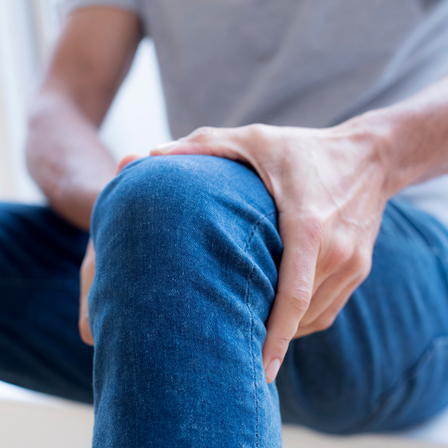
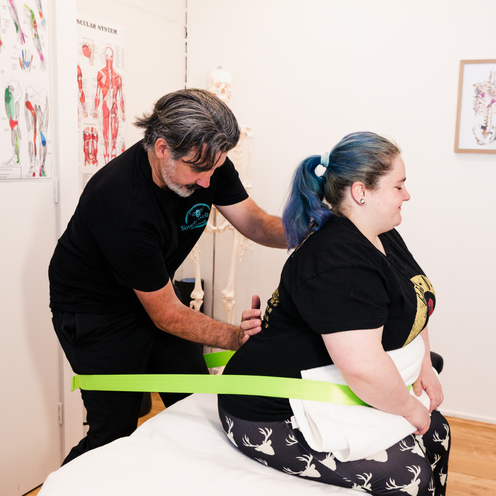
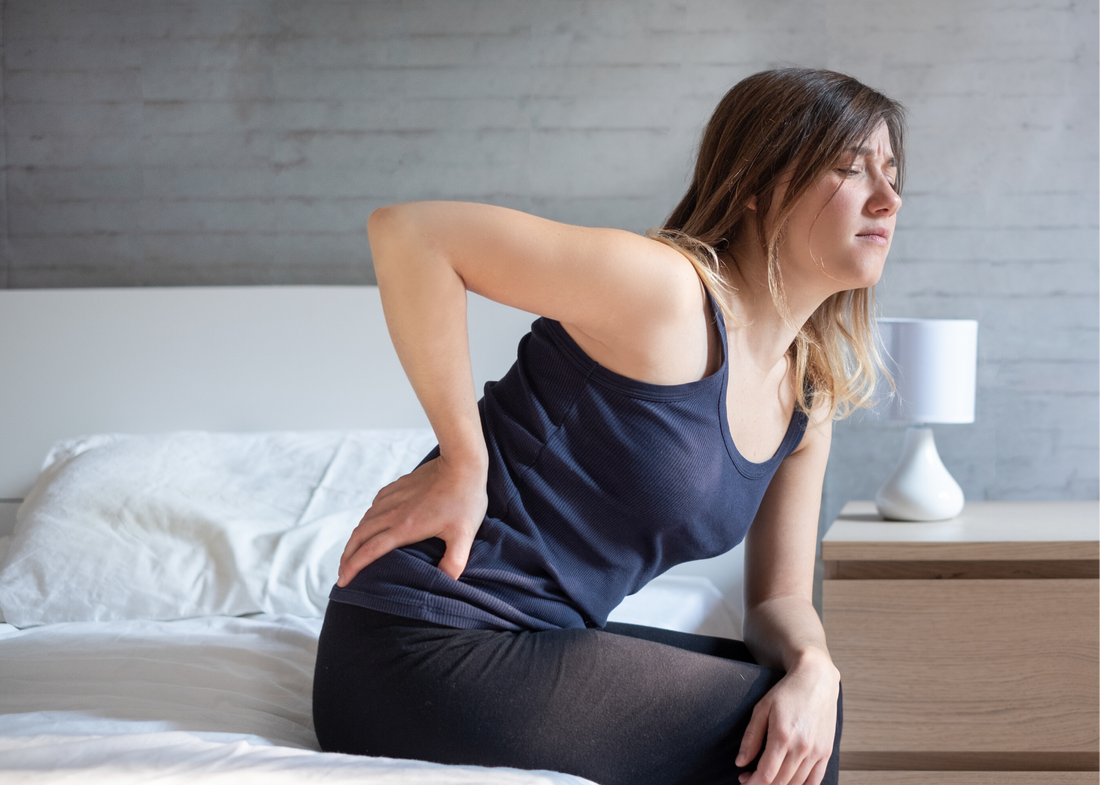
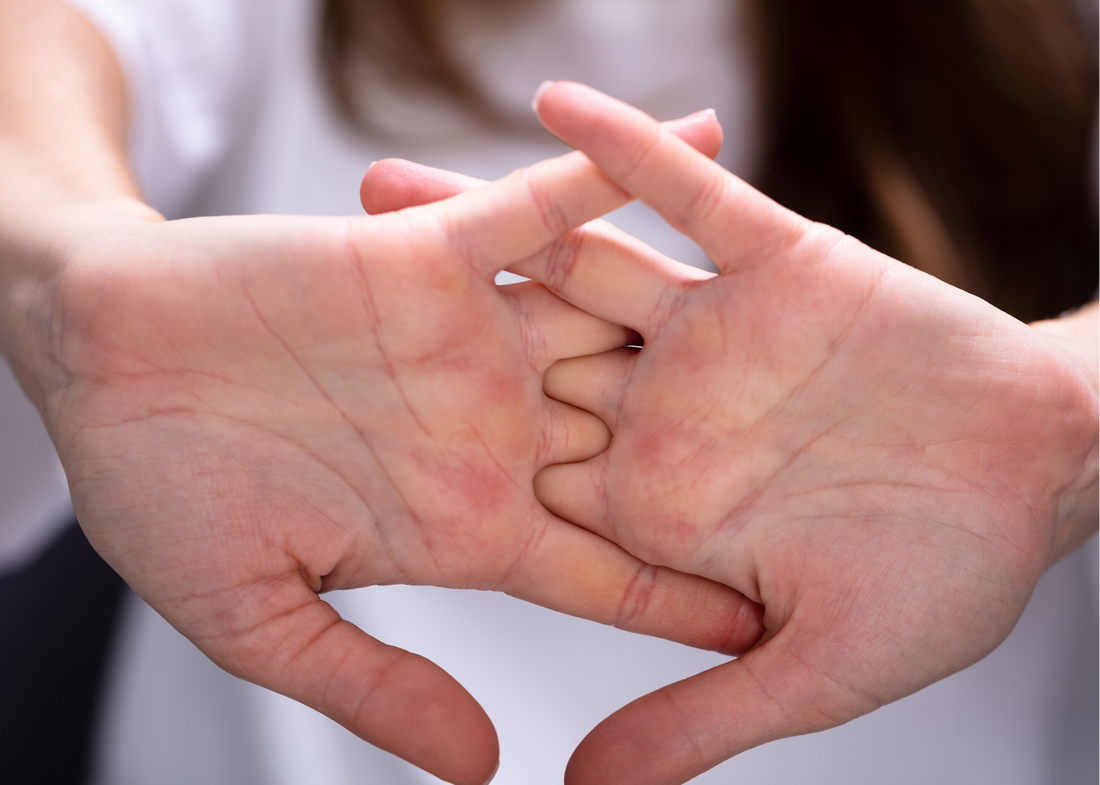
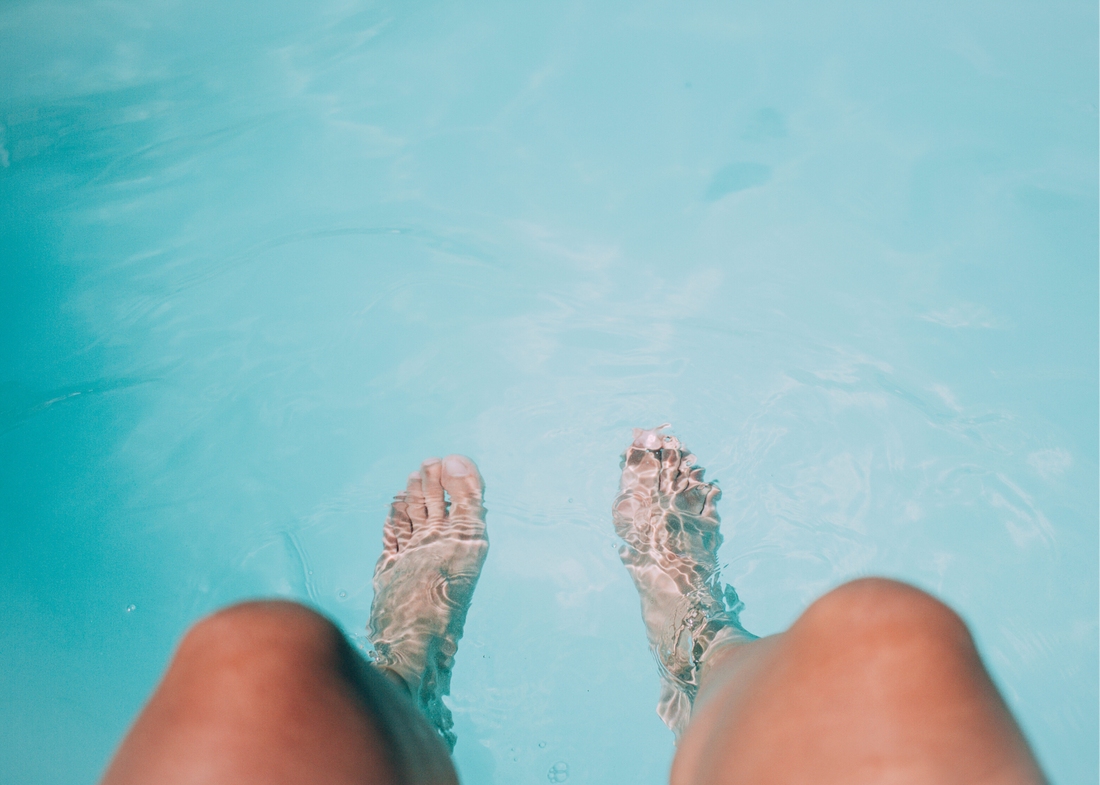
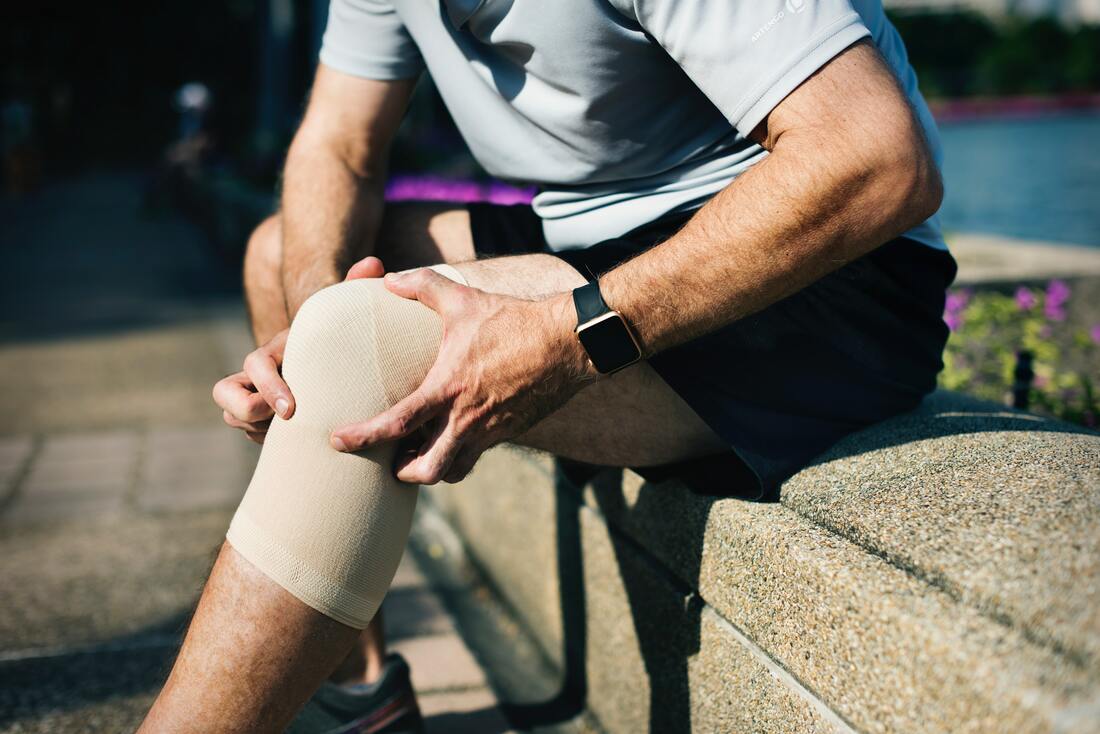
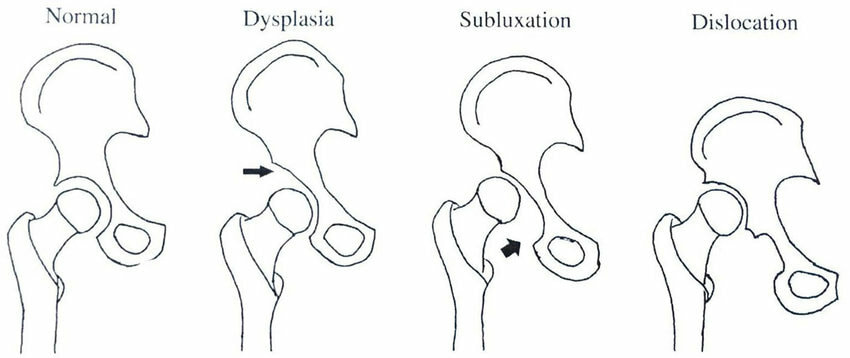
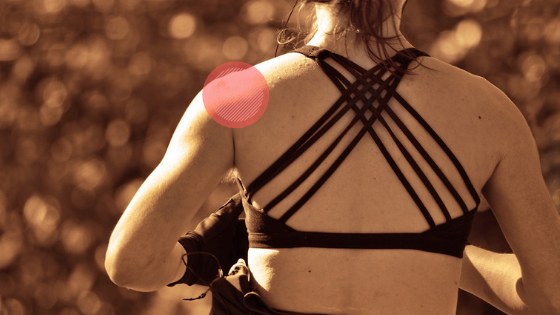
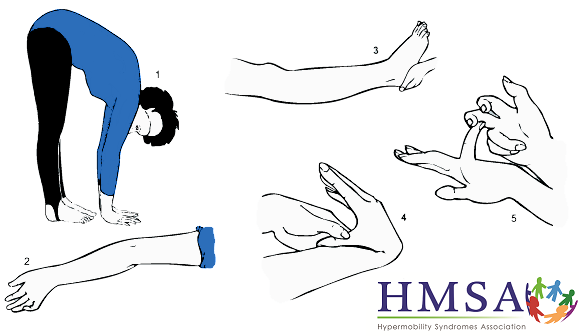
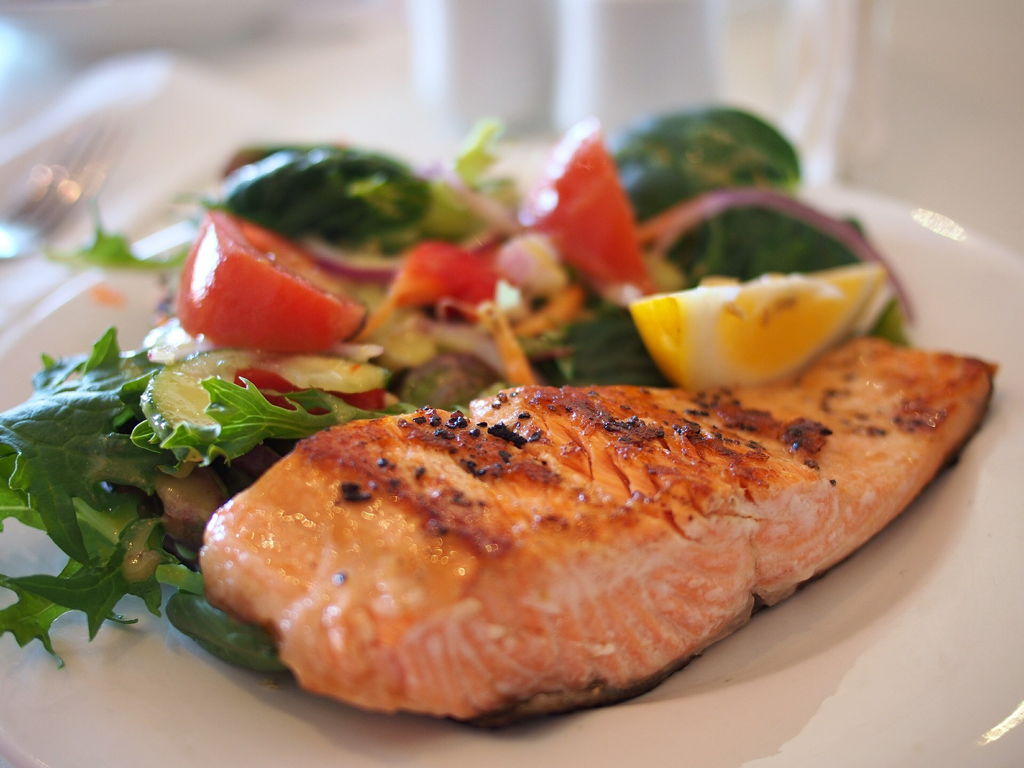
 RSS Feed
RSS Feed